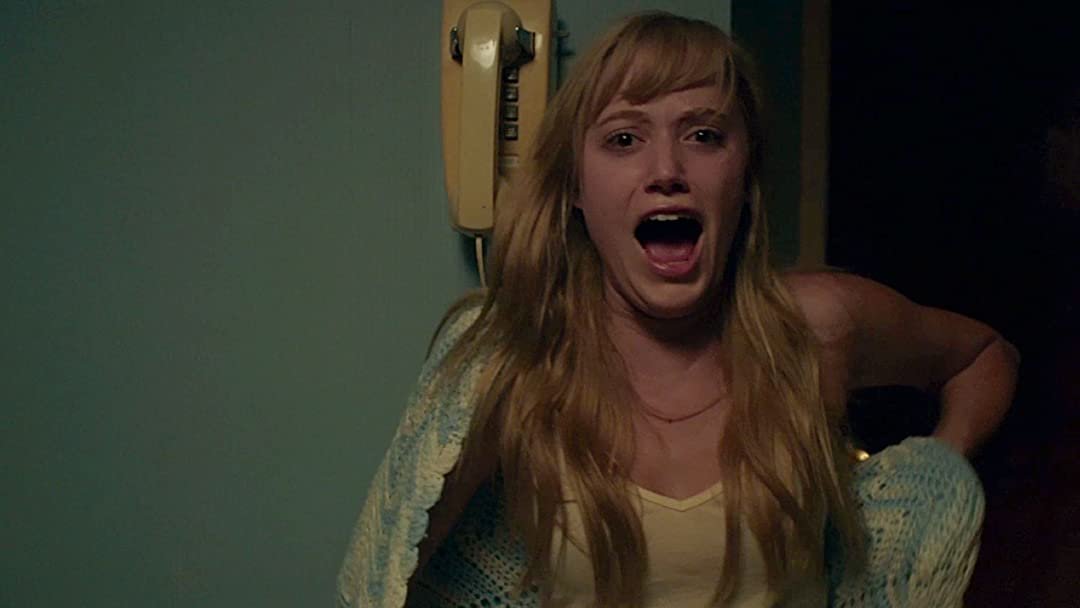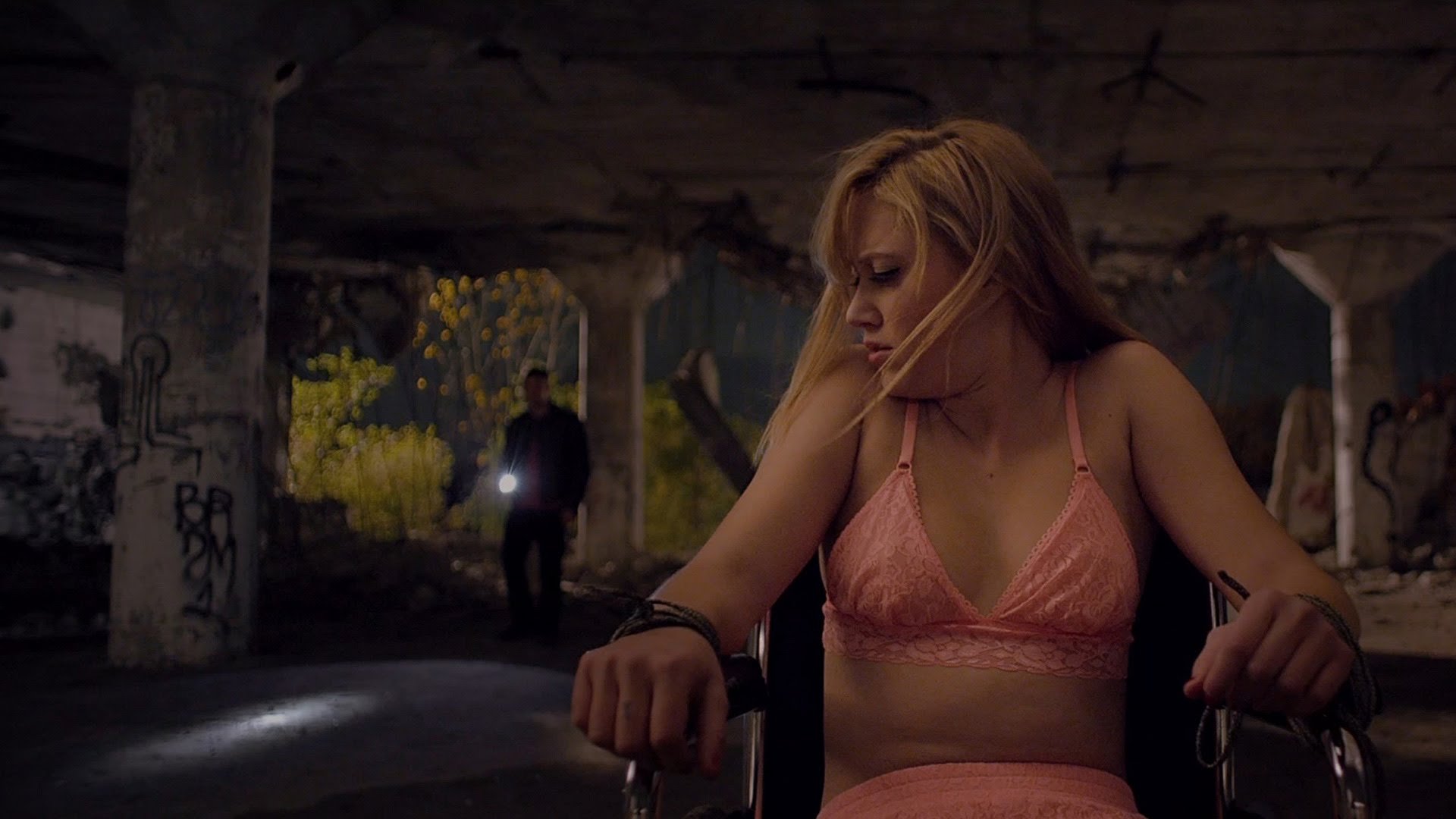Sex Equals Death: Exploring Sexuality and Misogyny in “It Follows”
In a world saturated in discussion around human rights and hypocrisies, it’s easy to get lost in the fog. On a more specific note, it’s important to discuss how womanhood in the media is portrayed. For the horror genre, recent films like Teeth (2007) and Raw (2016) reveal gory, brutal coming-of-age stories where the female protagonists must weather harsh storms to survive. In a way, the common narrative around feminine maturity is that, without question, we must accept and endure the burdens placed on our shoulders. With the overturning of Roe vs. Wade, it’s scary to see how in the real world, this is now our reality as well.
David Robert Mitchell’s It Follows (2014) explores this same dark coming-of-age story through a setting that nestles itself in timelessness and a monster reminiscent of Stephen King’s It. Among the plethora of themes Mitchell tackles, It Follows explores the trope that sex equals death and begs discussions around misogyny and societal hypocrisy.
Thinking she’s found the perfect guy, Jay (Maika Monroe) is excited to accompany Hugh (Jake Weary) on an exciting string of dates. That is⸺until a bizarre, horrifying turn of events where Hugh reveals his true intentions. While Jay enjoyed the endorphins of youthful dating, Hugh was successfully masterminding a plot to transfer his sexually transmitted monster onto her. This sexually transmitted monster takes any human form it can to get close to its prey, and “It” will walk towards you until it is close enough to kill, and Hugh is glad to free himself from its terror. Once Jay realizes what has happened, it’s too late⸺she and her friends must embark on a journey of pain and self-realization to free Jay from its grasp.
Monroe’s acting elevates everything to an entirely new level. She displays a diverse range of abilities that craft a wordless, internal struggle within Jay, and does not need dialogue to explain Jay’s experience. After Jay’s attack, Monroe stands in front of the mirror in a tank top and underwear, staring blankly at herself. Slowly, she reaches her hand down, pulls open the waistband of her underwear, and stares in a muted horror. Monroe’s fingers clench the elastic waistband, nervously twitching while her eyes absorb her body. It’s here that her breath quickens, and she shows Jay’s heightening panic at what is her new reality. This scene, while short, speaks volumes; it reveals Jay’s newly disjointed version of herself, where she no longer knows or understands the body she resides in.
The beauty of this film lies in its discussion around sexuality and the trope that sex will kill you. Jay, as she says to Kelly, is excited to have sex with Hugh. Their sex is enthusiastically consensual; and afterwards, Jay lounges in the back of his car with the doors open and plays with a white flower that has sprouted through the pavement. While weaving her fingers around the flower, she comfortably opens up about how she’s always wanted to be old enough to go on dates, and details how she always imagined driving around with a “really cute guy.” Their hands would be intertwined as they drive nowhere in particular, she said, and their journey would be about having freedom.
This all comes to a sudden stop and Hugh mounts her from behind and holds the chloroform rag to her face. Here, the film reveals its true message: sex equals death. While Jay did not fear sex, “It” ensured that she would regret it. This is a turning point for Jay: what once was easy, flowery, and carefree, has now become a death sentence. Jay must either bear the burden of “It” for the rest of her life, use her body to give “It” to another person, or, if she chooses neither of those things, she’ll die. She becomes “It’s” pawn, which enforces the societal belief that sex is something you can never come back from. This is a dated belief, but one that persists today nonetheless, with many U.S. states still maintaining that abstinence-only sex education is the best way to teach sex.
This abstinence-only approach is widely rejected by health officials who work with young people, yet “under the current U.S. guidelines, states cannot use federal funding to educate adolescents about contraceptive use or discuss contraceptive methods, except to emphasize failure rates.” With the overturning of Roe vs. Wade and this fundamental lack of sex education, the U.S. is setting young women up for failure.
When Hugh drops Jay, naked and defeated, off in the street in front of her home, the film’s exposition quickly heats up. Jay’s sister Kelly (Lili Sepe), and Kelly’s friends Yara (Olivia Luccardi) and Paul (Kier Gilchrist), swarm to her aid. Once the police arrive, the neighborhood buzzes with shameless curiosity, and Jay sits huddled in a blanket next to her garage as an officer asks her questions. First, he asks, “Was it consensual?” to which Jay responds with a somber, “Yes.” The cop’s reaction to that question is a pause, and then he continues with more follow- up questions. His final line, while spoken gently, speaks volumes: “Have you ever been to his home?”
This approach⸺gathering information at the scene of a crime⸺is undoubtedly necessary. However, the issue lies in a few things: first, Jay, a clearly distraught and traumatized victim, is left sitting outside so her neighbors can freely stare. Second, asking the question, “Was it consensual?”, places culpability on the victim. Yes, that is an important question to ask, but it simplifies the extremely complex concept of consent down to a yes or no answer. The complexity lies in Jay’s encounter with Hugh: the sex was consensual, but the aftermath was not. Which, in the eyes of the law, is a difficult thing to tackle, again pointing to the inherently flawed question about it being consensual. Similarly, his question about if she’d ever been to his house before shifts the blame to her; it feels like he’s saying, “Did you even know this guy?”
The officer is suggesting that Jay’s actions make the crime – chloroforming her, tying her to a wheelchair, holding her captive in the parking garage, and knowingly giving her a sexually transmitted disease⸺less criminal. This strongly resembles the “What Were You Wearing?” question that victims of sexual assault often have to field, and gives a concrete example of what it’s like to be asked such questions. When sexual abuse survivors decide to come forward with their stories, the investigation process is often just as traumatic as the event itself.
In terms of societal hypocrisy, all this translates to one harsh message: the outside world cares, but can only do so much. The systems in place to find justice for survivors further victimizes them, often with little result. After the initial investigation, Jay sees no court-based justice for her experience⸺which mirrors real life as, according to RAINN, only 25 out of 1,000 sexual assault perpetrators actually face prison time.
The officers clearly want to help, but it can be assumed that nothing happened because of the current criminal system. With little evidence of the shape-shifting monster that Jay herself cannot explain, and no sexual assault occuring, Jay’s story is hard to prosecute. So in a world that claims it’s there to support her, Jay finds herself only supported by her closest friends.
On a separate but equally important note, displays of misogyny slip their way into the story early. While Jay lounges in her backyard pool, two young boys are peeping their heads over the fence to watch her. She shakes this off, but it’s foreshadowing of an ever-present theme that Jay is always being watched. Once Hugh attacks Jay, and Jay stands in front of her mirror to assess her new, post-trauma self, the camera pans to the back of the house, where the same young boy from earlier watches her through the bathroom window. Through this, Mitchell shows how our society views women: they’re seen as a spectacle to be gawked at, even in their most vulnerable moments.
In so many words, the greatest part of this film is the cautionary tales woven throughout. As a woman, the teachings that sex equals death are far from uncommon⸺concepts as ridiculous as chastity and “waiting until marriage” are taught from quite a young age. Jay, someone who did not fear sex, found herself at its mercy for the rest of her life. Through countless discussions around sex in society, Mitchell undoubtedly constructed a film that will be as timeless as its setting. And perhaps, through metaphorical horror films like this one, the world can learn a little more about how young women must struggle to survive a world designed without them in mind.

